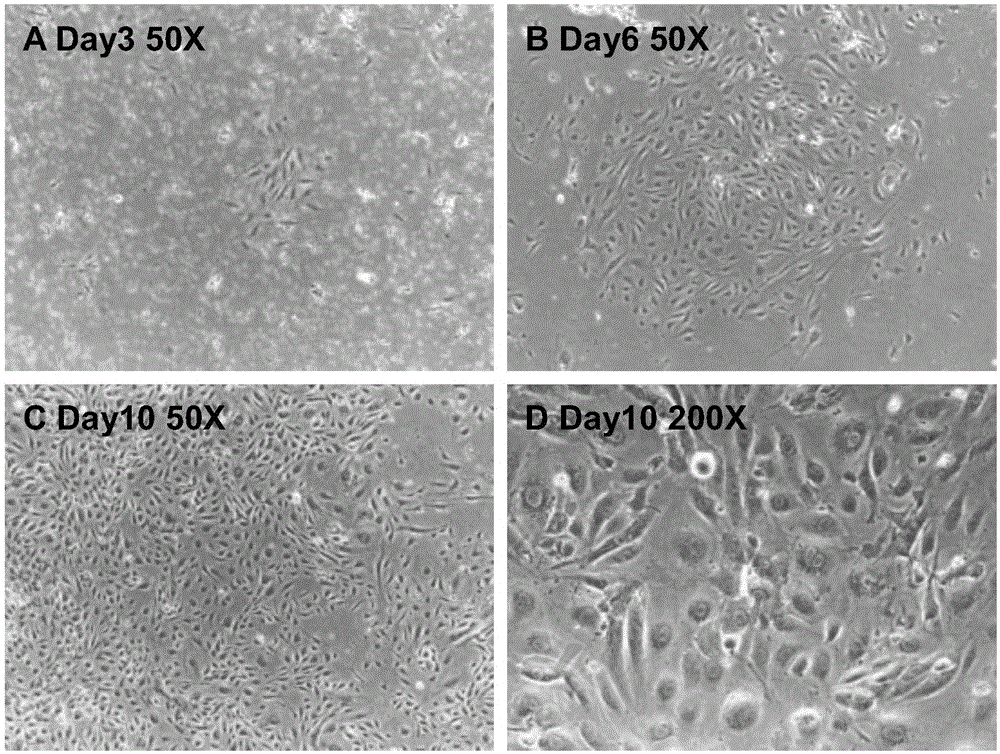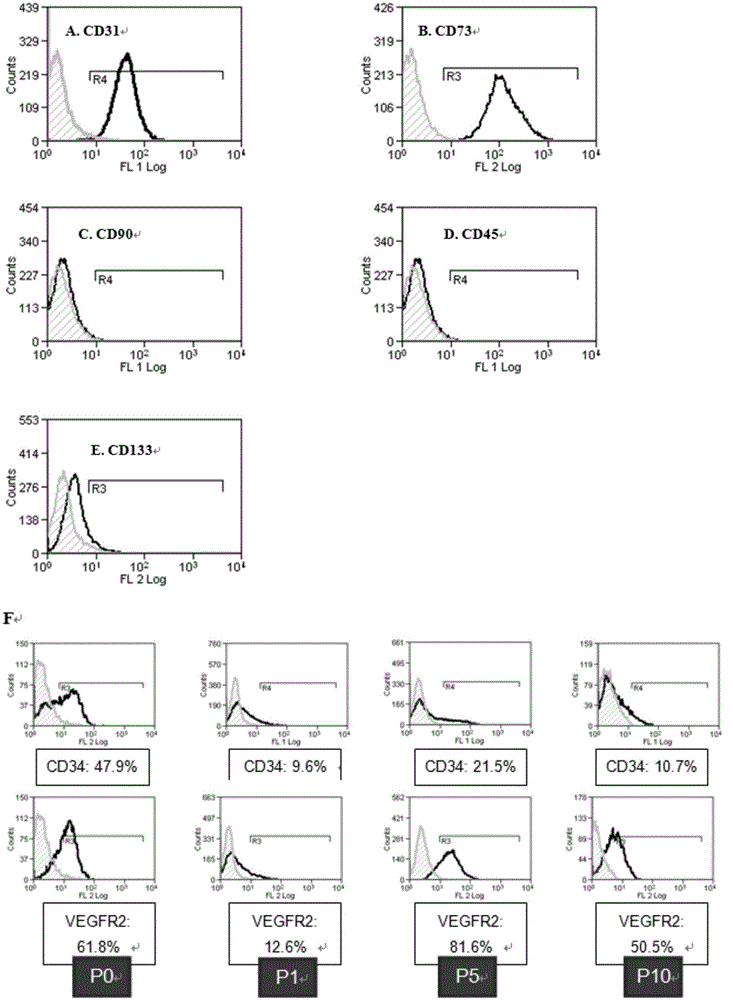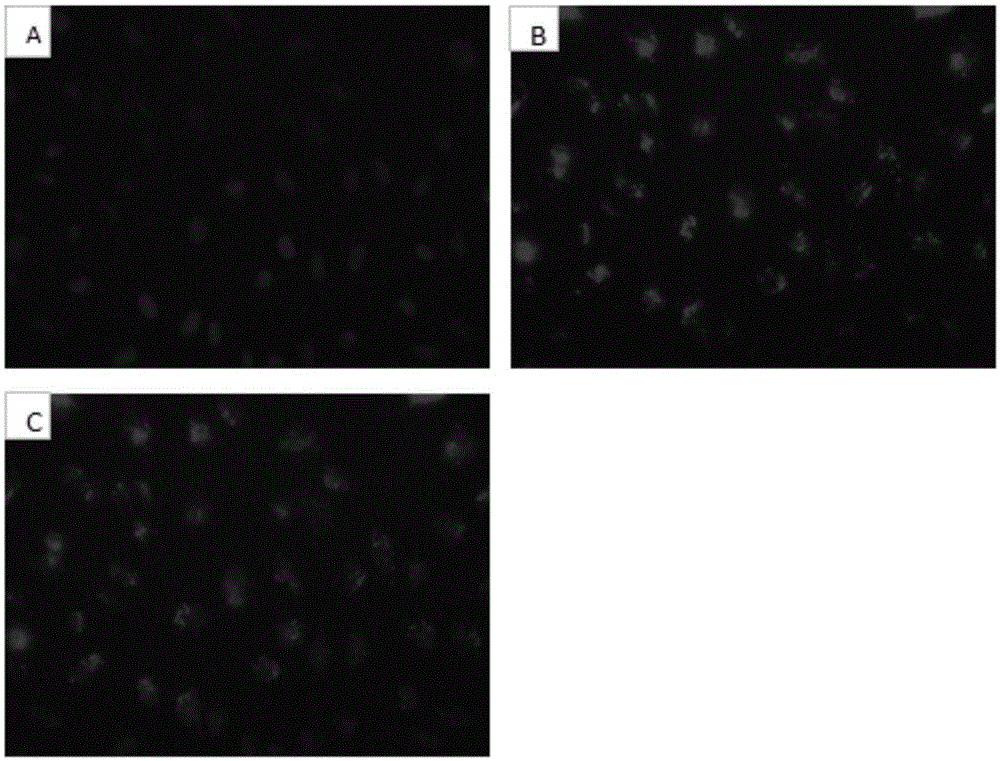Method for isolating and culturing endothelium from human adipose tissue for clone formation of cells
A technique for separating and culturing adipose tissue, which is applied in the field of cell biology to achieve the effects of short separation and culturing time, simple operation, and good angiogenesis
- Summary
- Abstract
- Description
- Claims
- Application Information
AI Technical Summary
Problems solved by technology
Method used
Image
Examples
Embodiment 1
[0046] Example 1 Isolation and culture of endothelial clone-forming cells of the present invention
[0047] a. Take the adipose tissue, wash the adipose tissue with normal saline twice, remove the lower layer of liquid, and retain the upper layer of fat;
[0048] Add an equal volume of 0.2% type I collagenase solution, digest it in a shaker at 37°C for 1 hour, with an oscillation frequency of 150 rpm / min; put it in a centrifuge, centrifuge at 900 g for 5 minutes, discard the supernatant, and get Cell pellet
[0049] b. Add physiological saline to the cell pellet in step a, resuspend the cell cluster, centrifuge at 500g, and centrifuge for 5 minutes;
[0050] Discard the supernatant, resuspend the pellet in DMEM:F12 (1:1) containing 10% FBS, inoculate it in a T75 culture flask pre-coated with 0.1 mg / 1 mL type I rat tail collagen, and culture for 48 hours;
[0051] c. Replace the cell culture medium containing 10% FBS in step b with EGM2 medium, and culture for 1 day, and pavement-like c...
Embodiment 2
[0054] Example 2 Isolation and culture of endothelial clone-forming cells of the present invention
[0055] a. Take the adipose tissue, wash the adipose tissue with normal saline 3 times, remove the lower layer of liquid, and retain the upper layer of fat;
[0056] Add an equal volume of 0.1% type I collagenase solution, digest in a shaker at 37°C for 2 hours, with an oscillation frequency of 150 rpm / min; put it in a centrifuge, centrifuge at 500 g for 10 minutes, and discard the supernatant. Cell pellet
[0057] b. Add physiological saline to the cell pellet in step a, resuspend the cell cluster, centrifuge at 500g, and centrifuge for 5 minutes;
[0058] Discard the supernatant, resuspend the pellet in DMEM:F12 (1:1) containing 10% FBS, inoculate it in a T75 culture flask pre-coated with 0.1 mg / 1 mL type I rat tail collagen, and culture for 48 hours;
[0059] c. Replace the cell culture medium containing 10% FBS in step b with EGM2 medium, culture until the pavement-like cell colonies...
Embodiment 3
[0062] Example 3 Isolation and culture of endothelial clone-forming cells of the present invention
[0063] a. Take the adipose tissue, wash the adipose tissue with normal saline twice, remove the lower layer of liquid, and retain the upper layer of fat;
[0064] Add an equal volume of 0.5% type I collagenase solution, digest it in a shaker at 37°C for 0.5 hours, with an oscillation frequency of 150 rpm / min; put it in a centrifuge, centrifuge at 900g for 5 minutes, discard the supernatant, and get Cell pellet
[0065] Steps b, c, d are the same as in Example 2.
PUM
 Login to View More
Login to View More Abstract
Description
Claims
Application Information
 Login to View More
Login to View More - R&D
- Intellectual Property
- Life Sciences
- Materials
- Tech Scout
- Unparalleled Data Quality
- Higher Quality Content
- 60% Fewer Hallucinations
Browse by: Latest US Patents, China's latest patents, Technical Efficacy Thesaurus, Application Domain, Technology Topic, Popular Technical Reports.
© 2025 PatSnap. All rights reserved.Legal|Privacy policy|Modern Slavery Act Transparency Statement|Sitemap|About US| Contact US: help@patsnap.com



